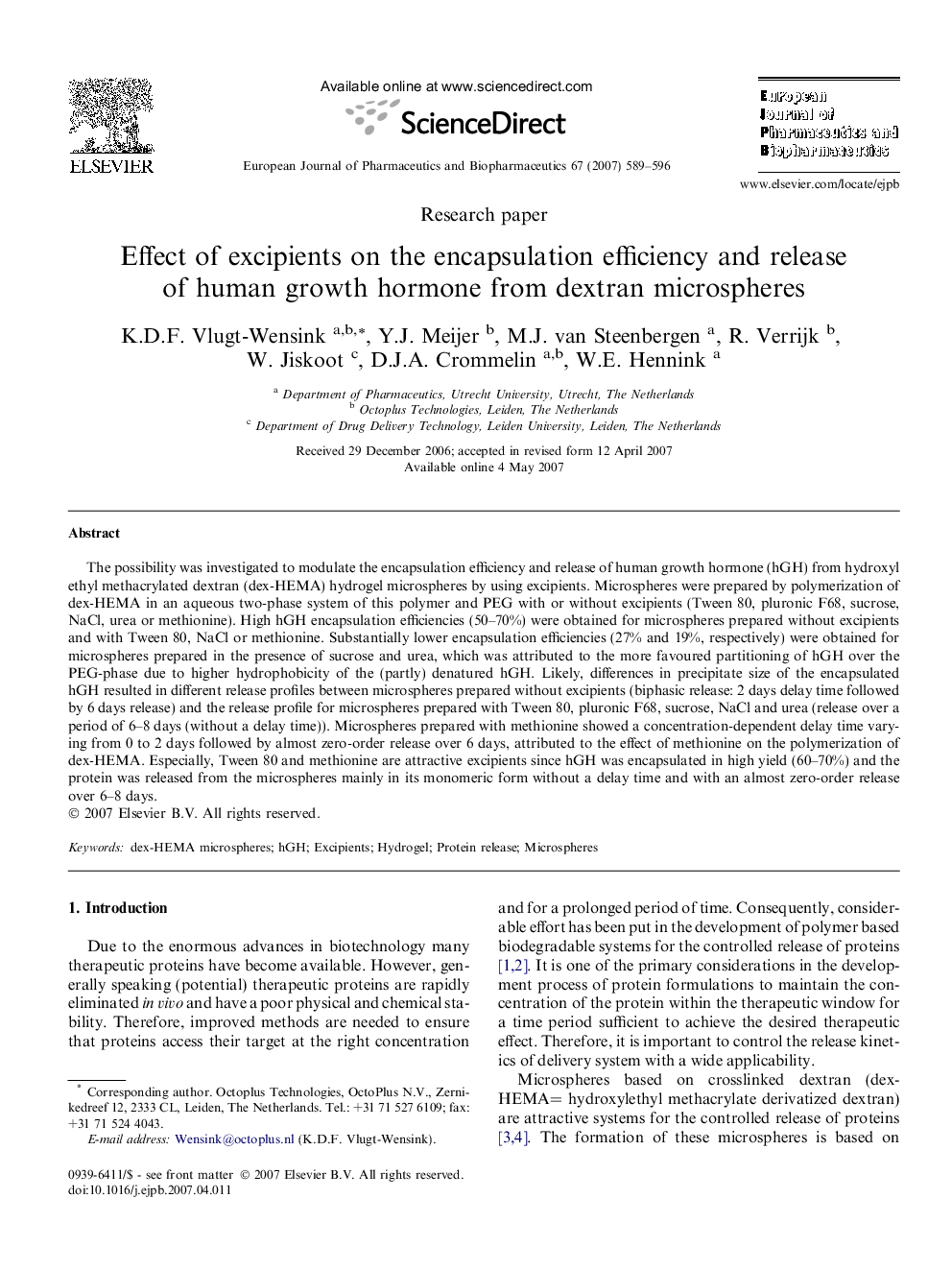| کد مقاله | کد نشریه | سال انتشار | مقاله انگلیسی | نسخه تمام متن |
|---|---|---|---|---|
| 2085695 | 1545401 | 2007 | 8 صفحه PDF | دانلود رایگان |

The possibility was investigated to modulate the encapsulation efficiency and release of human growth hormone (hGH) from hydroxyl ethyl methacrylated dextran (dex-HEMA) hydrogel microspheres by using excipients. Microspheres were prepared by polymerization of dex-HEMA in an aqueous two-phase system of this polymer and PEG with or without excipients (Tween 80, pluronic F68, sucrose, NaCl, urea or methionine). High hGH encapsulation efficiencies (50–70%) were obtained for microspheres prepared without excipients and with Tween 80, NaCl or methionine. Substantially lower encapsulation efficiencies (27% and 19%, respectively) were obtained for microspheres prepared in the presence of sucrose and urea, which was attributed to the more favoured partitioning of hGH over the PEG-phase due to higher hydrophobicity of the (partly) denatured hGH. Likely, differences in precipitate size of the encapsulated hGH resulted in different release profiles between microspheres prepared without excipients (biphasic release: 2 days delay time followed by 6 days release) and the release profile for microspheres prepared with Tween 80, pluronic F68, sucrose, NaCl and urea (release over a period of 6–8 days (without a delay time)). Microspheres prepared with methionine showed a concentration-dependent delay time varying from 0 to 2 days followed by almost zero-order release over 6 days, attributed to the effect of methionine on the polymerization of dex-HEMA. Especially, Tween 80 and methionine are attractive excipients since hGH was encapsulated in high yield (60–70%) and the protein was released from the microspheres mainly in its monomeric form without a delay time and with an almost zero-order release over 6–8 days.
Journal: European Journal of Pharmaceutics and Biopharmaceutics - Volume 67, Issue 3, November 2007, Pages 589–596